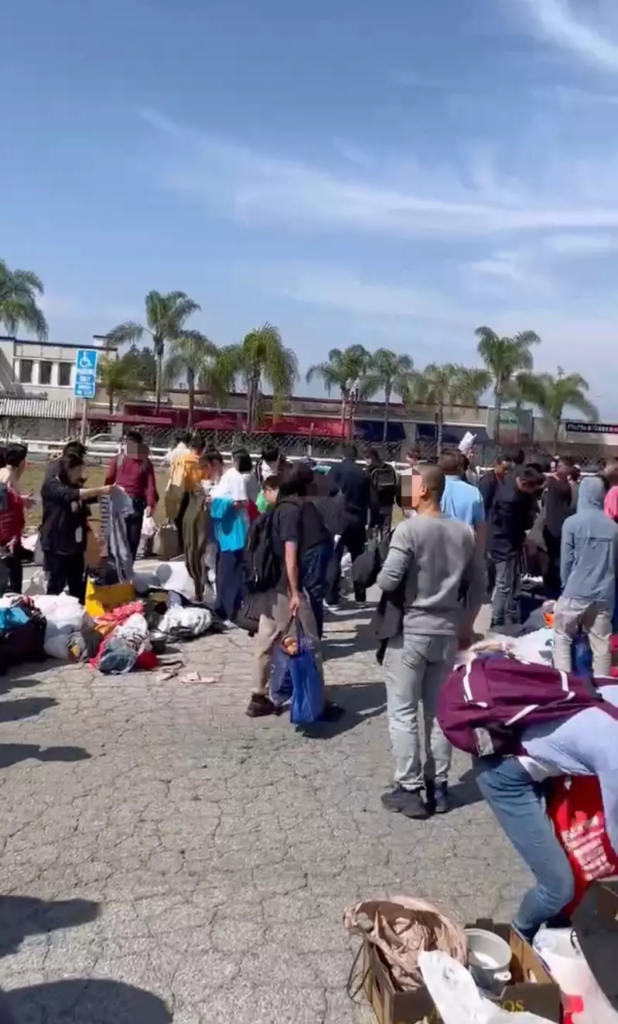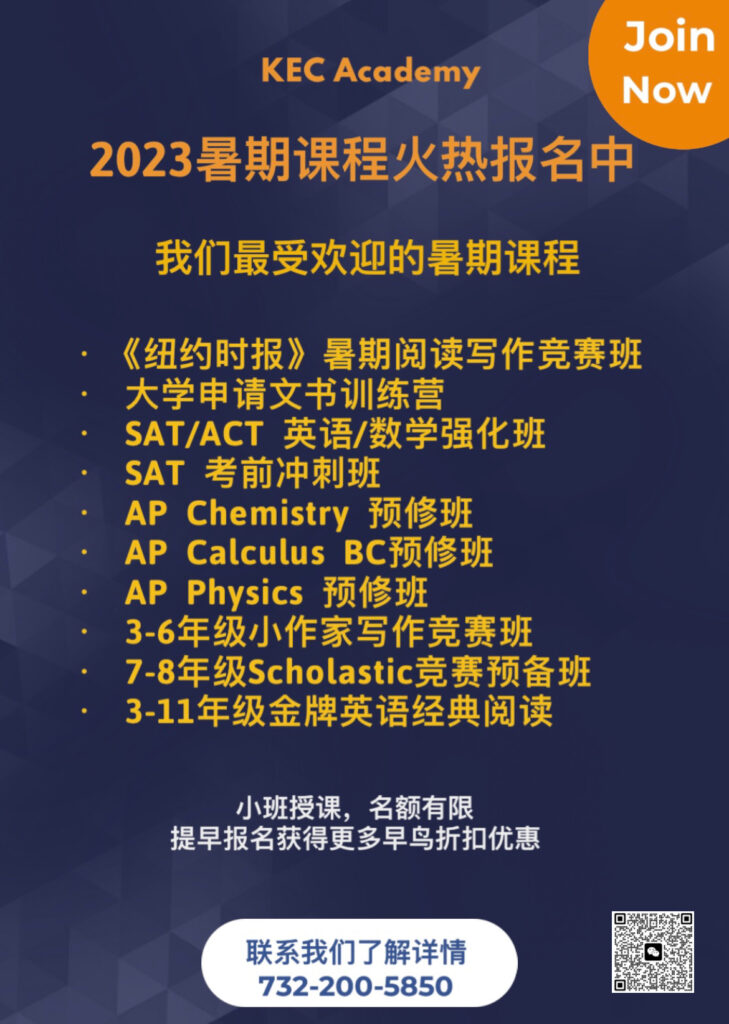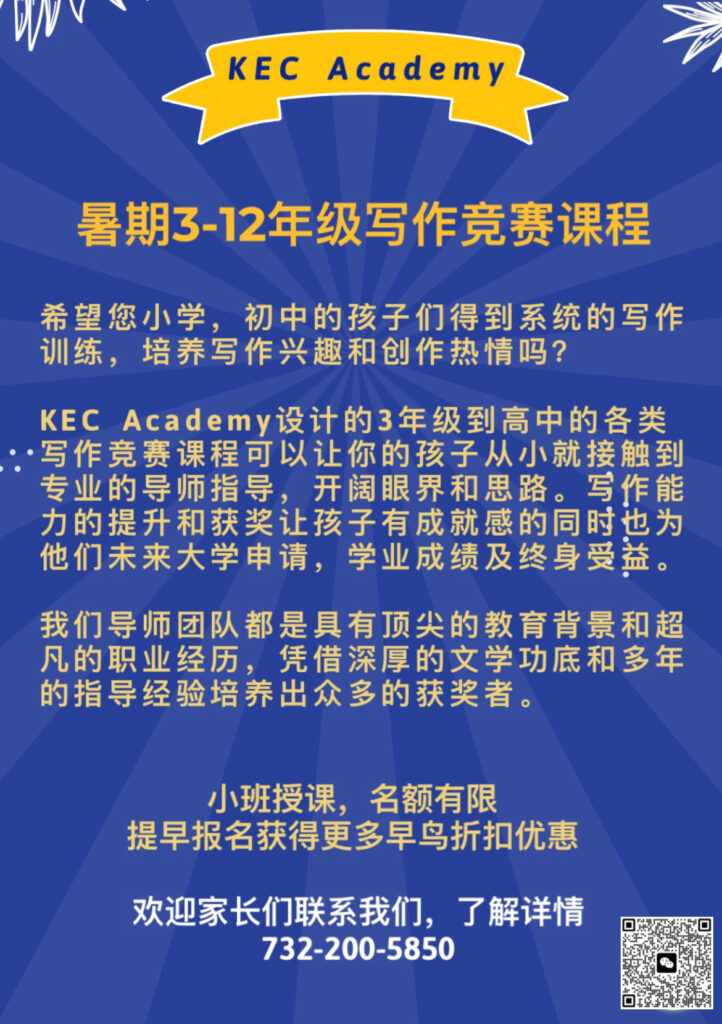500华人偷渡美国 洛县华人团体关怀赠物资
世界新闻网
4/24/2023

活动现场近500名穿越边界进入美国的移民获得了急用物资。 (受访者提供)
距离拜登政府5月11日移民政策调整仅剩下不足一个月时间,近期穿越边界线的非法移民数量激增。大部分此类非法移民在刚进入美国后生存环境都非常艰苦。近日,有南加华人自发组织起来,向这些从中国「走线」穿越边界进入美国的移民捐助生活用品物资,帮助他们渡过难关。
4月16日下午3时左右,近500位华人聚集在蒙特利公园市一个室外停车场。在人群中,除了年轻人外,也有小孩和孕妇,他们排成队列,等待依次领取捐赠物资。同时,40多位华人义工正在井然有序地派发物品,捐赠物资包括食物、背包、T恤、水壶、被褥毯子、衣服等生活必须用品。乍看之下,这里像是一处旧货交易市场,实际上,这是一场针对无证客的人道主义救助活动。现场义工表示,此类活动已组织举办三次,每次活动现场都让大家感触颇多。
活动组织者表示,他们的想法其实很简单:「这些历经千辛万苦,穿越山区雨林来到美国的华人同胞,无论是出于什么样的动机, 但既然已经拖家带眷来到我们身边,并且生活状况如此糟糕,衣食无着,露宿街头,那么我们在力所能及的范围内伸出援手,提供一些力所能及的『人道主义救助』也是应该的。特别是其中有许多孩子和孕妇,他们更加需要被关心和帮助。这样的活动不涉及任何价值观和政治制度,也不涉及这个群体以及其中出现的非常多的『不认同』行为和现象。我们这些活动并不是在鼓励这样的行为,我们只是在做人与人之间的关怀。」
此次活动援助近500位华人,从中午开始直到傍晚结束。组织者表示,这是一个非常特殊的群体,群体人数在过去三个月以来呈井喷式增长。他们穿越多个国家,路程长达数月,路途危险四伏,多数人在穿越途中都遭遇抢劫等意外。在抵达美国后,他们会被送往移民收留中心,但被释放后只能携带手机和现金,其余衣物及个人物品全都会被销毁。他们很多人后来只能露宿街头,沿街乞讨,非常可怜。在派发物资的过程中,很多义工看到受领物资的孕妇和孩童,难抑心中同情伤感,纷纷流下了眼泪。

参与活动的王女士说,「其实刚开始我也很纠结,不知道到底应不应该帮助这些人。如果帮助他们,会不会是助长这样的非法移民途径呢?但我瞬间又想到当初来到这个国家时,也曾遇到过很多困难,也是前辈们伸出援手,帮助了像我这样新来的移民。不管是出于什么样的原因让他们来到这里,但眼前这些人们此刻是真的在面临困难,我们难道不应该帮助他们吗?」
王女士还表示,她在活动中了解到很多关于这些无证移民的故事。一位中年男子告诉王女士,他原本是生意人,因疫情管控生意亏钱,老婆也跟他离了婚,目前一无所有只好选择这条路。还有一位22岁的年轻小伙说,花了将近两个月的时间,从中国香港到土耳其(Turkey),再到厄瓜多尔尔(Ecuador),再北上至墨西哥边境,最终抵达美国。他能够平安抵达美国已属非常幸运,在他之前,就有人因为巴士翻车断了胳膊,甚至还有人离开人世。他在出发前就知道面临很多危险,但还是决定一试。这位小伙还说,他刚刚新买了用来理发的剪刀,今后想要依靠理发来维持生计。
王女士还了解到,在这些「偷渡大军」中,华人群体在总人数中其实占比很少。王女士说,「目前为止,我接触到的这些『无证客』都很善良,他们之间也会把物资留给最需要帮助的人,并不会因为是免费物资就随意领取。」
另一位华人Scott表示,看到人们自发的组织这类活动,让他感慨颇深。他说,「这些人冒着生命危险,千辛万苦来到这里,真的就是为了他们心中的美国梦。」

近百位爱心人士捐赠了数千件食物和日用品。(受访者提供)

达连隘口 最凶险偷渡路 毒枭索路费1人400元起跳
世界新闻网
4/17/2023

一群委内瑞拉无证客沿着达连隘口,涉水进入巴拿马。(美联社)
「达连隘口」(Darién Gap)是连接中美洲与南美洲的一片雨林,这里地处偏远、未开信道路,地势崎岖多山,却也是最受欢迎、最危险的偷渡路径之一,每年有上万名无证移民长途跋涉通过达连隘口前往美国,一路上面临无数危机,忍受挨饿与痛楚,只为实现他们的美国梦。
去年增2倍 25万人穿越隘口
受到经济与人道危机促使,2022年约有25万人穿越达连隘口,几乎是前一年的两倍,更是2010年至2020年年平均水平的20倍。根据巴拿马当局数据,2023年的早期数据显示1月至3月期间穿过达连隘口的人数是去年1万3791人的六倍,多达8万7390人。
无论这趟旅程是多么艰辛与不易,穿越这条道路追寻美国梦的移民人潮仍不间断。
CNN团队徒步跋涉70哩采访

「达连隘口」是最危险的偷渡路径之一。(美联社)
有线电视新闻网(CNN)的一组采访团队2月徒步跋涉近70哩,采访移民、向导、当地居民与政府官员,探究如此多人冒险踏上达连隘口的原因。

通过这条路线耗时五日,从哥伦比亚一个海边小镇出发,先穿越农村社区,接着攀上一座陡峭的山,再切过充满泥泞、林木茂密的雨林与河流,最后到达巴拿马下奇基托(Bajo Chiquito)一个政府营运的营地,移民在此转往其他中心,之后继续往北前进。
达连隘口受到不法集团控制,他们从高度组织化的走私业务赚取数以百万元计的暴利。
「人类包裹」 毒枭年赚上千万

从哥伦比亚一个海边小镇出发,最后到达巴拿马下奇基托,沿途危险,是主要的偷渡路径,被称为「达连隘口」。(美联社)
移民是不法集团的新商品,甚至可能比毒品更好赚,这些「人类包裹」可以自行移动,竞争对手不会试图偷窃抢夺这些「包裹」;每个移民必须支付至少400元才能进入达连隘口,还得自行承担所有的风险。CNN估算,人口走私贸易为不法集团每年赚进上千万元。
3国声明:将提供合法新道路
美国、巴拿马及哥伦比亚政府11日宣布将推出60日的活动,旨在终结非法移民穿越达连隘口,三国表示这一路线导致死亡与剥削,让不法集团赚取巨额利润;联合声明表示将为上万移民与难民提供合法且弹性的新道路,但并未详细说明该如何实行。
美国国务院一名高级官员拒绝透露不法集团的收入数据,仅回答「这绝对是巨额生意,但这一生意不考量安全、痛苦或福祉,只是为了牟利、移动人口。」
H-1B配偶工作诉讼撤消 湾区高科技业外籍员工欣慰
世界新闻网
4/10/2023

湾区高科技产业相当倚赖持H-1B签证的外籍员工。持H-4签证的外籍员工配偶享有工作资格,将吸引外籍员工留在公司。(Getty Images)
华府联邦法庭法官日前宣布撤消H-4签证者工作资格问题相关诉讼。消息传出,许多湾区高科技产业员工表示欣慰。H-4签证给予持H-1B签证员工的配偶在美国工作资格。专家表示,湾区高科技产业相当倚赖持H-1B签证的外籍员工。持H-4签证的外籍员工配偶享有工作资格,将吸引外籍员工留在公司继续效力之意愿。根据统计,美国目前约有9万名持H-4签证人士。
移民法专家指出,美国允许在持H-1B签证的外籍员工于申请绿卡期间,他们持H-4签证的配偶享有工作资格。然反对者于2015年提出法律诉讼,要求取消此项优惠,指出这项法规对美国公民不利。因为他们必须与非公民争取工作机会。前美国总统川普亦支持取消持H-4签证民众工作资格。
佛利蒙移民乔格列卡(Pratima Joglekar)表示,联邦法庭取消此案,移除他们头上一片阴影。
现年38岁的乔格列卡为印度移民。她的先生持H-1B签证,在湾区高科技产业工作。乔格列卡14年前从印度移民美国,长期住在湾区,除了在律师事务所担任助理外,亦为保护H-4签证组织SaveH4EAD的领导人士之一。她说,H-4签证对移民家庭非常重要,这让移民配偶有机会取得经济自主,同时贡献美国社会。
整个取消H-4签证者工作资格诉讼案前后经过8年缠讼,华府联邦法庭终于决定不审理此案。硅谷主要高科技产业包括谷歌、苹果、思科(Cisco)、Salesforce、推特(Twitter)为保留其外籍员工,合力敦促联邦法庭允许9万名持H-4签证者享有在美工作权。
前总统川普政府时期,有关H-1B签证与持H-4签证工作资格成为美国移民辩论的引爆点。川普在竞选期间攻击H-1B签证,指控这种移民签证引进大量外国员工,夺走美国劳工阶级的工作。美国科技产业倚赖H-1B外籍员工,特别拨款聘请游说团体,宣扬H-1BH-4签证的重要性。科技界游说团体称,如采取H-4签证,让外籍员工配偶能在美国工作,将能吸引更多外籍人才,提高美国科技竞争力。然而川普政府当时扬言,将取消持H-4签证者在美国工作的资格。
旧金山移民律师杜耶宁(Kelli Duehning)称,川普所引发的诉讼已告一段落,这让每个人都松了一口气。
Google发送一项电邮称,包括Google一些员工在内,法庭裁决对美国数千个家庭带来大好消息。然而自称「保护美国工作」(Save Jobs USA)的原告律师团称,将继续针对全案提出上诉。

世说新闻╱谁在从中作梗?华人移民难上加难
世界新闻网
4/04/2023

2023年想通过工作的方式留在美国,可谓困难重重。(世说新闻团队制作)
2023年想通过工作的方式留在美国,可谓困难重重。除了许多公司为了应对可能的经济不景气,大规模裁员外,H1B工作签证的中签率,也降至近年来新低。有华人连续四年抽签不中,对前路感到迷茫。移民律师指出,印度人利用规则挤占名额,是工作签证越来越难抽的重要原因。
Apr 4, 2023
移民局:B1/B2签证可找工作 但上班前须先转换身分
世界新闻网
3/26/2023

美国公民及移民服务局(U.S. Citizenship and Immigration Services,USCIS)在推特发表声明指出,持观光、商务签证入境美国的外籍人士,如今可以在美国找工作或参加面试。
为了澄清与工作证有关的消息混淆,公民及移民服务局在推文中写道,持B-1、B-2以及B-3签证入境美国的外籍人士,如今可以在美国找工作以及参加面试。
不过,公民及移民服务局在推文中强调,持观光、商务签证入境者找到工作之后,必须在开始上班之前,确认签证类别已经转换完成。
公民及移民服务局推文写道:「许多民众都曾询问,身分为B-1或B-2签证期间能不到寻找新工作。答案是可以的。寻找就业机会以及为了就业参加面试,都是持有B-1或B-2签证时受到准许的活动。」

求职期间 须申请更改身分
B-1或B-2签证持有人在美国找工作期间,必须提出更改非移民身分的申请,并且取得特殊状况工作许可。B-1或B-2签证持有人也可以申请更改雇主。
公民及移民服务局说,即使之前持有的非移民签证遭到取消,在美国停留的时间仍然可以超过60天的宽限期,但如果没有在规定时间内完成身分转换,最后可能必须带着家属一同离境。
然而,申请签证身分更改如果遭到拒绝,申请人就必须离开美国,要先转换到另一种签证,才能开始工作。
公民及移民服务局表示,非移民劳工如果丢掉工作,不管是自愿失业或非自愿失业,在符合条件的情况下,如果按照程序提出申请,可以获准继续留在美国,包括提出更改非移民身分申请,或提出调整移民身分申请及申请特殊状况工作许可。
USCIS Provides Guidance on Program for International Entrepreneurs
Release Date: 03/10/2023
U.S. Citizenship and Immigration Services has issued comprehensive guidance (PDF, 311.98 KB) on parole for international entrepreneurs.
To enhance entrepreneurship, innovation and job creation in the United States, the Department of Homeland Security (DHS) published the International Entrepreneur Rule on Jan. 17, 2017.
This rule provides a framework for DHS to use its parole authority to grant a period of authorized stay, on a case-by-case basis, to noncitizen entrepreneurs who possess a substantial ownership interest in a start-up entity and who can demonstrate that their stay in the United States would provide a significant public benefit through that start-up entity’s potential for rapid business growth and job creation.
After fully implementing the International Entrepreneur Rule in 2021, we have received a growing number of applications and continue to adjudicate them as expeditiously as possible.

We are now publishing guidance in the Policy Manual, which includes information about:
- The criteria for consideration for the applicant, the start-up entity, and the qualified investment or government award or grant;
- Evidence and documentation;
- The discretionary nature of the entrepreneur parole adjudication;
- Conditions on parole and bases for termination;
- The criteria for consideration for an additional parole period; and
- Options available to the entrepreneur’s family to join the entrepreneur as parolees and, if eligible, to obtain employment authorization.
Although an individual who is paroled into the United States has not been admitted into the United States for purposes of immigration law, parolees may enter and remain in the United States and may be authorized to work.
For more information, see Part G (International Entrepreneur Parole) in Volume 3, Humanitarian Protection and Parole, of the USCIS Policy Manual.
Additional information on the international entrepreneur parole process, including the criteria for consideration, related definitions, how to apply, and questions and answers, is available on the International Entrepreneur Parole page.
Last Reviewed/Updated: 03/10/2023
USCIS to Start Collecting Fee for EB-5 Integrity Fund
Release Date: 03/01/2023
Today, the Department of Homeland Security posted a Federal Register notice providing information related to the EB-5 Integrity Fund. We will use the EB-5 Integrity Fund primarily to administer the EB-5 Regional Center Program, as required by the EB-5 Reform and Integrity Act of 2022. Starting March 2, we will collect an annual fee from each designated regional center to finance the EB-5 Integrity Fund.
As required under the new EB-5 law, the fee is $20,000 for regional centers with more than 20 investors and $10,000 for those with 20 or fewer investors. The fee payment for fiscal year (FY) 2023 is due by Apr. 1, 2023, and regional centers must pay the fee online directly at Pay.gov, a system managed by the U.S. Department of the Treasury. Starting in FY 2024 (October 2023), the fee will be due at the start of each fiscal year between Oct. 1 and Oct. 31.
In addition, the filing fee for Form I-526E, Immigrant Petition by Regional Center Investor, increased by $1,000 on Oct. 1, 2022, to incorporate the Integrity Fund fees.
We may use fees collected for the EB-5 Integrity Fund to detect and investigate fraud and other immigration crimes.
硅谷 101 — 有趣的前沿科技深度视频
We will not impose late fees for payments that were due in FY 2023. We will start imposing a late fee, beginning October 2023, for any payments made more than 30 days later than the due date. We will announce the amount of the late penalty and the process for collecting in a future publication before we collect it or it is due.
Per the new EB-5 law, we must terminate the designation of any regional center that does not pay the fee within 90 days of the due date. Termination will not be automatic, and we will provide a notice of intent to terminate and the opportunity to prove that the fee was paid in the proper amount within 90 days of the due date before sending a notice of termination.
The EB-5 Regional Center Program makes visas available to qualified immigrants (and the eligible spouses and children of such immigrants) who pool their investments with other qualified immigrants in a “regional center” in the United States. We designate regional centers based on a proposal for the promotion of economic growth, including prospective job creation and increased domestic capital investment in their requested geographic region.
The Federal Register notice and the EB-5 Integrity Fund page explain the requirement for the fee and provide the process for how it is to be paid.
Last Reviewed/Updated: 03/01/2023
第一次买房者可申请到 $12500-$15000 的买房补助,并且首付可放到低至3%.
两个不同的补助项目:
1. 一个是高达 $15000 补助,目前对马里兰州的所有County和滨州的York County开放.
2. 另一个是 $5000 补助,对全美50个州开放.
USCIS Issues Clarifying Guidance for Individuals Authorized to Work Under Special Student Relief Provisions
Release Date: 02/22/2023
U.S. Citizenship and Immigration Services is issuing policy guidance in the USCIS Policy Manual to clarify the validity period of employment authorization for F-1 nonimmigrant students experiencing severe economic hardship due to emergent circumstances (also known as special student relief (SSR)) who are work authorized under the SSR provisions of 8 CFR.
The update clarifies that in cases of severe economic hardship due to emergent circumstances, we may grant off-campus SSR employment authorization to an F-1 nonimmigrant student for the duration of the Federal Register notice validity period. This employment authorization may not extend past the student’s academic program end date. This update notes that we may issue employment authorization documents for the duration of the Federal Register notice, which is typically an 18-month validity period, as permitted by the relevant SSR Federal Register notice.
Emergent circumstances are events that affect F-1 nonimmigrant students from a particular region and create severe economic hardship. These events may include, but are not limited to, natural disasters, financial crises, and military conflicts.
This policy update will be effective when published and will apply to all pending and future applications for SSR employment authorization.
For more information, see the policy update (PDF, 313.07 KB).
Last Reviewed/Updated: 02/22/2023
北美房屋检查 | 华府房屋检查 MD/VA 电话: (240)784-6645
FY 2024 H-1B Cap Initial Registration Period Opens on March 1
Release Date: 01/27/2023
Today, U.S. Citizenship and Immigration Services announced that the initial registration period for the fiscal year 2024 H-1B cap will open at noon Eastern on March 1 and run through noon Eastern on March 17, 2023. During this period, prospective petitioners and representatives will be able to complete and submit their registrations using our online H-1B registration system.
We will assign a confirmation number to each registration submitted for the FY 2024 H-1B cap. This number is used solely to track registrations; you cannot use this number to track your case status in Case Status Online.
Prospective H-1B cap-subject petitioners or their representatives are required to use a myUSCIS online account to register each beneficiary electronically for the selection process and pay the associated $10 H-1B registration fee for each registration submitted on behalf of each beneficiary. Prospective petitioners submitting their own registrations (U.S. employers and U.S. agents, collectively known as “registrants”) will use a “registrant” account. Registrants will be able to create new accounts beginning at noon Eastern on Feb. 21.
Representatives may add clients to their accounts at any time, but both representatives and registrants must wait until March 1 to enter beneficiary information and submit the registration with the $10 fee. Prospective petitioners or their representatives will be able to submit registrations for multiple beneficiaries in a single online session. Through the account, they will be able to prepare, edit, and store draft registrations prior to final payment and submission of each registration.
If we receive enough registrations by March 17, we will randomly select registrations and send selection notifications via users’ myUSCIS online accounts. If we do not receive enough registrations, all registrations that were properly submitted in the initial registration period will be selected. We intend to notify account holders by March 31.
The U.S. Department of Treasury has approved a temporary increase in the daily credit card transaction limit from $24,999.99 to $39,999.99 per day for the FY 2024 H-1B cap season. This temporary increase is in response to the volume of previous H-1B registrations that exceeded the daily credit card limit. Additional information will be provided before the start of the initial H-1B registration period.
An H-1B cap-subject petition, including a petition for a beneficiary who is eligible for the advanced degree exemption, may only be filed by a petitioner whose registration for the beneficiary named in the H-1B petition was selected in the H-1B registration process.
Last Reviewed/Updated: 01/27/2023
USCIS
Recommendations for Paper Filings to Avoid Scanning Delays
Release Date: 12/19/2022
U.S. Citizenship and Immigration Services (USCIS) is providing information for nonimmigrant workers whose employment has terminated, either voluntarily or involuntarily. These workers may have several options for remaining in the United States in a period of authorized stay based on existing rules and regulations.
Below is a compilation of options that may be available to nonimmigrant workers seeking to remain in the United States in a period of authorized stay following termination. Please note that not all options below provide employment authorization.
60-Day Grace Period
Regulations permit a discretionary grace period that allows workers in E-1, E-2, E-3, H-1B,
H-1B1, L-1, O-1, or TN classifications (and their dependents) to be considered as having maintained status following the cessation of employment for up to 60 consecutive calendar days or until the end of the authorized validity period, whichever is shorter (See 8 CFR 214.1(l)(2)).
During this period, workers may be able to maintain their nonimmigrant status if a new employer timely files a petition on their behalf with an extension of stay request (e.g., an H-1B change of employer petition for a worker in H-1B status).
Alternatively, workers may be able to remain in the United States in a period of authorized stay if they timely file an application to change to a new nonimmigrant status (such as B-2 visitor nonimmigrant status) or an application for adjustment of status, if eligible (see below for a detailed overview of options).
Workers who are unable to timely file a change of status application, or find a new employer who timely files a change of employer petition for the worker, may be required to depart the United States at the end of this grace period.

Portability to a New Employer
Portability rules permit workers currently in H-1B status to begin working for a new employer as soon as the employer properly files a new H-1B petition with USCIS, without waiting for the petition to be approved. More information about H-1B portability can be found on our H-1B Specialty Occupations page.
Also, a worker with an adjustment of status application (Form I-485) that has been pending for at least 180 days with an underlying valid immigrant visa petition (Form I-140) has the ability to transfer the underlying immigrant visa petition to a new offer of employment in the same or similar occupational classification with the same or a new employer. This is commonly referred to as “porting.” More information about porting can be found in the USCIS Policy Manual.
Change of Status
Workers may use the up to 60-day discretionary grace period to apply to change their nonimmigrant status, which may include changing status to become the dependent of a spouse (e.g., H-4, L-2). Some individuals in a dependent nonimmigrant status may be eligible for employment authorization incident to status, including spouses of E-1, E-2, E-3, or L-1 nonimmigrants (See USCIS Policy Manual). In addition, some spouses of H-1B workers may be eligible for work employment authorization if certain requirements are met.
Other possible nonimmigrant options include student status (F-1) or visitor status (B-1 or B-2). Note that, by statute, B-1 and B-2 nonimmigrant visitors are specifically precluded from “performing skilled or unskilled labor” in the United States. Certain F-1 students, by regulation, may engage in limited employment. For more information, please see our Change My Nonimmigrant Status page.
Potential pathways for noncitizen STEM professionals can be found on our Options for Noncitizen STEM Professionals to Work in the United States page.

Note: The timely filing of a non-frivolous application to change status will toll, or stop, the accrual of unlawful presence until the application is adjudicated. For example, if an individual files a non-frivolous application to change status before the end of the applicant’s 60-day grace period, they will not accrue unlawful presence while the application remains pending even after the 60-day grace period has elapsed. If the application is ultimately approved, then the individual’s status is changed and is considered to have been in a period of authorized presence the entire time the application was pending. If the application is denied, then the individual starts to accrue unlawful presence the day after the denial decision. Please see our Unlawful Presence and Inadmissibility page for more information.
Change of Status and Employer
Workers may use the up to 60-day discretionary grace period to seek a new employer-sponsored nonimmigrant status in the same or different status. For example, depending on the specific facts presented, an L-1 worker may be eligible for new employment under the TN, E-3, or H-1B1 classifications. The timely filing of a non-frivolous change of status application will prevent the accrual of unlawful presence until the application is adjudicated (see above). Such a filing alone will not, however, confer employment authorization in the new position during the pendency of the application, and will not extend employment authorization if the original classification is no longer valid. Some petitions may be eligible for premium processing for an additional fee.
Adjustment of Status
Some workers may be eligible to file a self-petitioned immigrant visa petition concurrently with an adjustment of status application. Examples of immigrant classifications that are eligible for self-petitioning include EB-1 Extraordinary Ability, EB-2 National Interest Waiver, or EB-5 Immigrant Investors. Workers with a pending adjustment application are generally eligible to remain in the United States and obtain an Employment Authorization Document (EAD).
Period of Authorized Stay – Compelling Circumstances Employment Authorization Document
Workers who are the beneficiary of an approved employment-based immigrant visa petition (Form I-140) may be eligible for a compelling circumstances EAD for up to one year if they:
- do not have an immigrant visa available to them in the Department of State’s Visa Bulletin, and
- face compelling circumstances.
Note: A compelling circumstances EAD is a discretionary stopgap measure intended to assist certain individuals on the path to lawful permanent residence by preventing the need to abruptly leave the United States. Workers who begin working on a compelling circumstances EAD will no longer be maintaining nonimmigrant status but generally will be considered to be in a period of authorized stay and will not accrue unlawful presence in the United States while the EAD is valid. More information about eligibility requirements and the application process can be found on our Employment Authorization in Compelling Circumstances page.
Expedite Criteria
Some circumstances may warrant expedited adjudication, including applications to change status to a dependent status that includes eligibility for employment authorization. For example, an application to change status from H-1B to L-2 may be eligible for expedited adjudication to prevent severe financial loss. See the How to Make an Expedite Request page for additional information.
Departure from the United States
Workers may choose to depart the United States. For H-1B and O workers who chose to depart the United States after involuntary cessation of employment, the reasonable costs of transportation to the worker’s last place of foreign residence must be borne by the H-1B employer or by the O employer and O petitioner, as applicable (See 8 CFR 214.2(h)(4)(iii)(E) and 8 CFR 214.2(o)(16)).
Once abroad, H-1B holders may seek U.S. employment and readmission to the United States for any remaining period of their H-1B status. Those seeking another classification for which they may be eligible can complete the application or petition process abroad and seek readmission to the United States.
The above information is now available on our new Options for Nonimmigrant Workers Following Termination of Employment page.
Last Reviewed/Updated: 12/19/2022
USCIS Extends Green Card Validity Extension to 24 Months for Green Card Renewals
Release Date: 09/28/2022
Effective Sept. 26, U.S. Citizenship and Immigration Services (USCIS) is automatically extending the validity of Permanent Resident Cards (also known as Green Cards) to 24 months for lawful permanent residents who file Form I-90, Application to Replace Permanent Resident Card.
Lawful permanent residents who properly file Form I-90 to renew an expiring or expired Green Card may receive this extension. Form I-90 receipt notices had previously provided a 12-month extension of the validity of a Green Card.
USCIS has updated the language on Form I-90 receipt notices to extend the validity of a Green Card for 24 months for individuals with a newly filed Form I-90. On Sept. 26, USCIS began printing amended receipt notices for individuals with a pending Form I-90.
These receipt notices can be presented with an expired Green Card as evidence of continued status. This extension is expected to help applicants who experience longer processing times, because they will receive proof of lawful permanent resident status as they await their renewed Green Card.
If you no longer have your Green Card and you need evidence of your lawful permanent resident status while waiting to receive your replacement Green Card, you may request an appointment at a USCIS Field Office by contacting the USCIS Contact Center, and we may issue you an Alien Documentation, Identification, and Telecommunications (ADIT) stamp after you file Form I-90.
For more information, visit our Replace Your Green Card page.
If your mailing address changes while your case is pending, please update it through your USCIS Online Account, if you have one.
Last Reviewed/Updated: 09/28/2022
硅谷 101 — 有趣的前沿科技深度视频
USCIS to Implement Next Phase of Premium Processing for Certain Previously Filed EB-1 and EB-2 Form I-140 Petitions
Release Date: 09/15/2022
U.S. Citizenship and Immigration Services is implementing the next phase of the premium processing expansion for certain petitioners who have a pending Form I-140, Immigrant Petition for Alien Workers, under the EB-1 and EB-2 classifications.
Similar to the first phase and second phase of the expansion, this phase only applies to certain previously filed Form I-140 petitions under an E13 multinational executive and manager classification or E21 classification as a member of professions with advanced degrees or exceptional ability seeking a national interest waiver (NIW).
Petitioners who wish to request a premium processing upgrade must file Form I-907, Request for Premium Processing Service.
Beginning Sept. 15, 2022, we will accept Form I-907 requests for:
- E13 multinational executive and manager petitions received on or before Jan. 1, 2022; and
- E21 NIW petitions received on or before Feb. 1, 2022.

We will reject premium processing requests for these Form I-140 classifications if the receipt date is after these dates. We have 45 days to take an adjudicative action on cases that request premium processing for these newly included Form I-140 classifications. We will not accept new (initial) Forms I-140 with a premium processing request at this time.
On May 24, 2022, we published a new version of Form I-907 (PDF, 378.35 KB), dated 05/31/22. As of July 1, we no longer accept the older 09/30/20 edition of form I-907.
As previously announced, we are expanding premium processing to additional form types as part of our efforts to increase efficiency and reduce burdens to the overall legal immigration system. As we implement the expansion of premium processing in a phased approach, we will continue working toward premium processing availability of additional Form I-140 petitions, Form I-539, Application to Extend/Change Nonimmigrant Status, and Form I-765, Application for Employment Authorization. We will also adhere to the legislative requirement that the expansion of premium processing must not cause an increase in processing times for regular immigration benefit requests.
Last Reviewed/Updated: 09/15/2022
硅谷 101 — 有趣的前沿科技深度视频
New STEM Resources Available on USCIS Website
Release Date: 07/28/2022
U.S. Citizenship and Immigration Services has published additional online resources on uscis.gov to provide an overview of some of the temporary and permanent pathways for noncitizens to work in the United States in the fields of science, technology, engineering, and math (STEM). This guide also highlights some of the most important considerations for STEM professionals who want to work in the United States.
New pages:
- Options for Noncitizen STEM Professionals to Work in the United States;
- Nonimmigrant Pathways for STEM Employment in the United States; and
- Immigrant Pathways for STEM Employment in the United States.
The United States has long been a destination for top talent from all over the world. Our ability to attract global talent—especially in the fields STEM—has spurred path-breaking innovation, leading to the creation of jobs, new industries, and new opportunities for all Americans.
Last Reviewed/Updated: 07/28/2022
硅谷 101 — 有趣的前沿科技深度视频
USCIS Updates Guidance for O-1 Petitions with a Focus on STEM Fields
Release Date: 07/22/2022
U.S. Citizenship and Immigration Services today updated its Policy Manual to provide further guidance on evidence that can be used to support a petition for an O-1A nonimmigrant of extraordinary ability with a focus on science, technology, engineering, and mathematics (STEM) fields.
USCIS clarified that being named on a competitive government grant for STEM research can be a positive factor toward demonstrating that a beneficiary is at the top of their field. This evidence is added to the listed examples of evidence that may be submitted to show that an applicant has extraordinary ability in the STEM fields. The full list is available in the USCIS Policy Manual.
O-1 nonimmigrant status is available to people with extraordinary ability in the sciences, arts, business, education, and athletics, and those with a record of extraordinary achievement in the motion picture or television industry.
Last Reviewed/Updated: 07/22/2022














